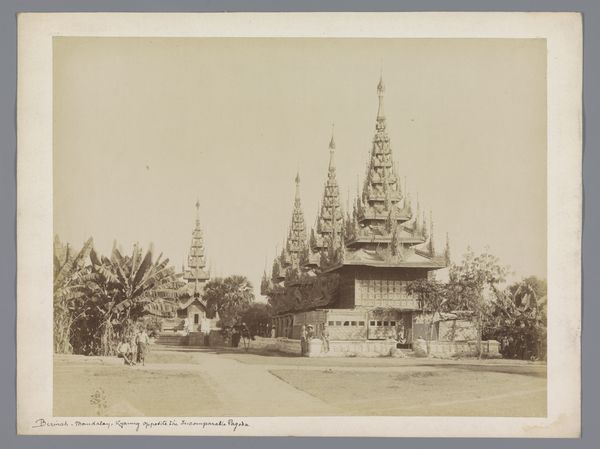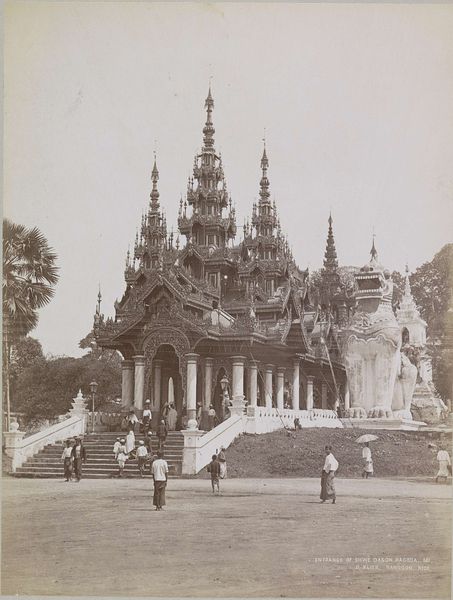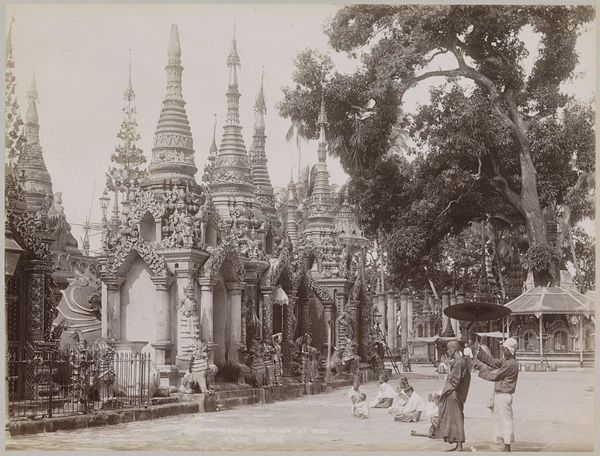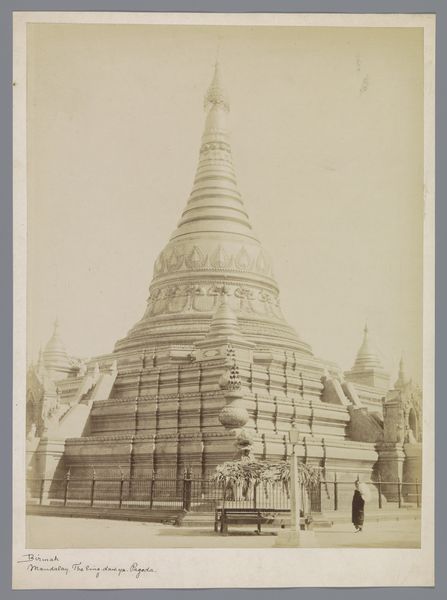
photography, albumen-print
#
asian-art
#
landscape
#
photography
#
orientalism
#
cityscape
#
albumen-print
Dimensions: height 193 mm, width 275 mm, height 232 mm, width 314 mm
Copyright: Rijks Museum: Open Domain
Curator: Felice Beato took this albumen print in 1890. It offers a "View of the Shweinbin monastery in Mandalay, Myanmar." Editor: There’s a delicacy to it. Almost like an architectural drawing rendered in lace. But the light is stark. It feels, to me, oddly devoid of warmth despite its beauty. Curator: Well, think about Beato’s context. He operated as a commercial photographer, and often, an Orientalist lens inflected his gaze. We should consider this image as a product of colonial desires, creating romanticized visions for Western consumption. It participates in larger narratives about empire, doesn't it? Editor: That colonial context is certainly part of the picture—literally. But look closer at the temple itself. The intricate carvings and the layered roofs…they speak of immense craftsmanship, of skilled laborers whose names we will probably never know. This work embodies a significant amount of material and intellectual investment. Curator: Yes, and thinking about that investment also pulls me into considerations of power. The monastery likely received funding from elites and royalty which solidified certain social structures in that era. It's a tangible manifestation of class hierarchies and state power visualized within religious doctrine. Editor: Agreed. And beyond the patronage system, consider the actual materials: wood, gold leaf perhaps, and the physical act of carving, constructing, and finishing these elaborate spaces. The albumen printing process too – light transforming chemistry on paper. There is labor etched into every single layer of this image, from Myanmar to London print studios. Curator: Thinking about that wider material network enriches my appreciation. Now, I begin to contextualize its place as both an aesthetic marvel and a complicated cultural artifact produced and consumed across an interconnected globe. Editor: Exactly! We move past simple aesthetics to consider the interconnectedness between materiality, labor, power structures, and historical contexts in forming a more complete understanding. I am pleased the image can yield this level of thinking.
Comments
No comments
Be the first to comment and join the conversation on the ultimate creative platform.













